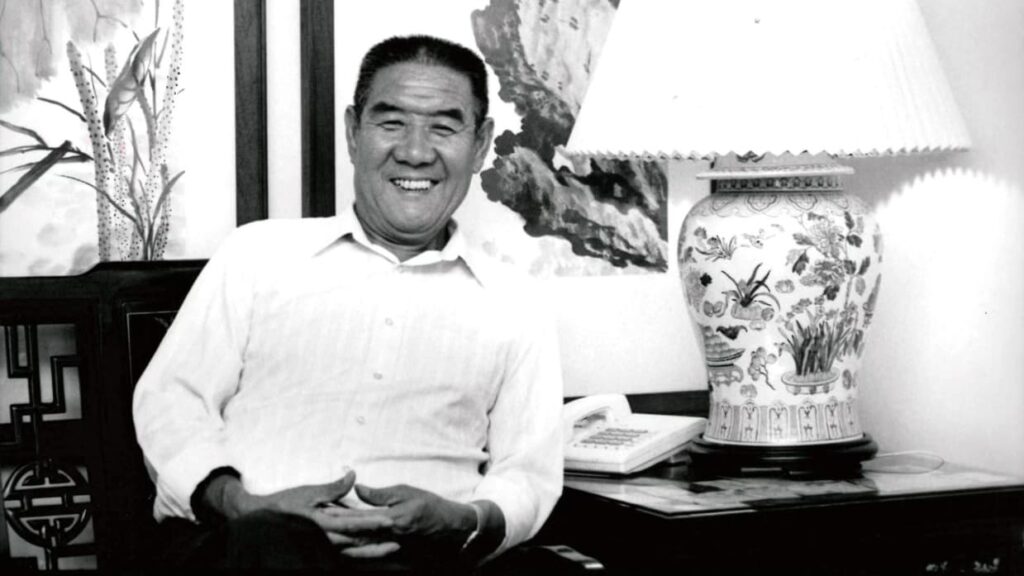Still, he was more than willing to learn in the kitchen.
Mr. Yang and his wife, Lai Pen-mei, had been running a cooking-oil company for more than a decade, selling peanut and sesame oil to restaurants and hotels. When orders started to decline, a friend suggested that the Yangs start making dim sum, with a focus on Shanghai cuisine since it was already popular in Taipei.
Partnering with his wife and two hired chefs, Mr. Yang began selling noodles and delicate, handmade soup dumplings from his company’s narrow building on Xinyi Road. He and his family grew the restaurant from four tables to more than 250 seats, establishing Din Tai Fung as one of Taiwan’s most popular dining destinations — even as a signboard near the entrance, an out-of-date relic from the business’s early years, continued to identify the storefront as an oil shop.
Mr. Yang, who died this month at 96, built Din Tai Fung into a soup-dumpling empire, working with his sons as the restaurant chain expanded overseas. The company now has more than 170 locations in 13 countries, including the United States, where the restaurant’s signature dish has drawn acclaim from food critics including Jonathan Gold of the Los Angeles Times.
“The xiao long bao are small miracles; plump, round spheres soft yet firm to the touch, delicately fragranced,” Gold wrote in 2013, after the chain’s latest outpost opened in Glendale, Calif. “When you pop one into your mouth, perhaps having wetted it first with a drop of black vinegar, it bursts into a mouthful of broth — boiling liquid if you haven’t allowed it to cool — transforming the filling of meat and aromatics into a loose, savory purée that melts away like pork-scented air.”
Although Mr. Yang came from China and mainly sold Shanghai dishes, his restaurant chain became a symbol of Taiwanese culture, with fans that included Taiwanese politicians and military leaders such as Chiang Wei-kuo, a son of Chiang Kai-shek, and Lien Chan, a head of the Nationalist Party. To promote the island’s image in 2007, the government enlisted a group of Din Tai Fung chefs to hold culinary demonstrations for dignitaries in London and Paris.
By then, the company was reporting revenue of about $22 million and rolling roughly 15 million dumplings a year. Even as it expanded overseas, the chain maintained a reputation for excellence and consistency — in 2010, its first Hong Kong location earned a coveted Michelin star — in part because of an elaborate training program. Employees were instructed not just on basics like how to fold dough and chop vegetables, but also “how to brush their teeth correctly and smile properly,” according to ABC News.
Mr. Yang aimed to grow his business through word-of-mouth rather than advertising, and Western tourists were increasingly drawn to his flagship restaurant after it was featured in a 1993 New York Times list of 10 “restaurants that inspire a pilgrimage.”
The review’s author, Chinese American chef Ken Hom, still vividly remembered his visit nearly two decades later. “I was in food heaven,” he told an interviewer. “It was perfection.”
Three years later, the chain opened its first overseas location, in Tokyo.
Mr. Yang was born in 1927 in the North China province of Shanxi. According to historian Haiming Liu’s book “From Canton Restaurant to Panda Express: A History of Chinese Food in the United States,” he served “in a local warlord army” before deciding he was poorly suited to military life. In 1948, he moved to Taiwan, seeking new opportunities with help from an uncle who lived on the island.
A year later, the Chinese Nationalist Party retreated to Taiwan, with Mao Zedong’s Communist Party taking power in Beijing. The ongoing standoff between the two sides effectively made Mr. Yang’s move permanent.
Mr. Yang started out as a delivery man at a cooking-oil company, rising to oversee the books. His colleagues included Lai, who he soon married; after the business went bankrupt, they started their own oil company in 1958. Its name, Din Tai Fung, combined the names of Mr. Yang’s old employer and new oil supplier.
Lai later developed menu items for the restaurant chain. She died in 1995.
Mr. Yang’s death, in Taiwan, was announced in a company statement on March 25, which said that he died “a few days ago” but did not provide additional details. He had retired in the early 2000s, after he and his wife unsuccessfully tried to keep their sons Warren and Frank from going into the family business.
“They said, ‘Just get a regular job where you don’t have to work on the weekends,’” Frank recalled in a 2002 interview with the Los Angeles Times. He couldn’t help himself, he said, and opened the chain’s first U.S. location in Arcadia, Calif.
His older brother, Warren (also known as Yang Ji-hua), succeeded their father as head of the company.

